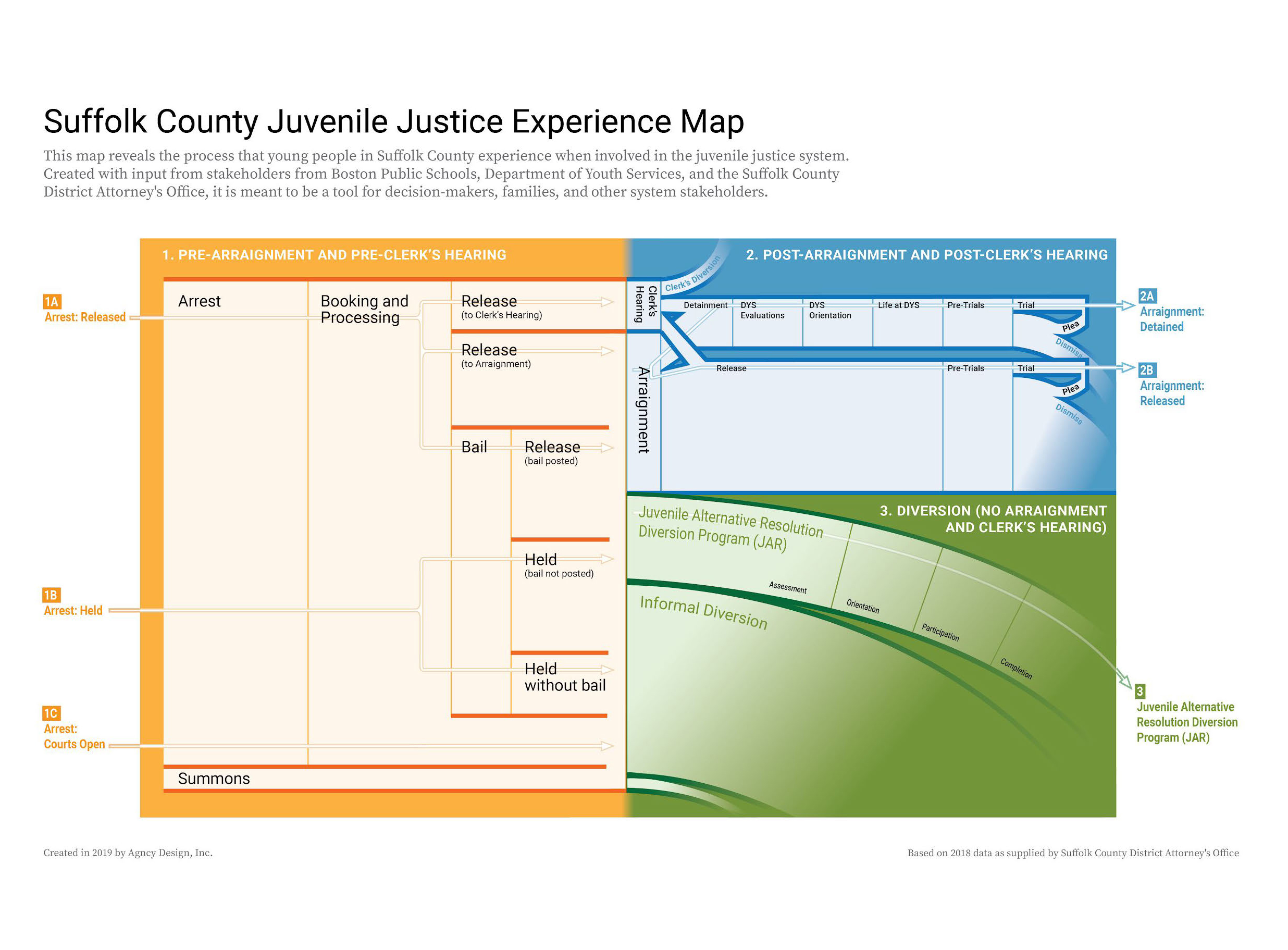Juvenile Justice Map
KNOWLEDGE-SHARING
Can bringing clarity to a system compel action?

The will to improve the Massachusetts juvenile justice system is gaining momentum. A massive criminal justice reform bill was signed just last year, and there’s a push to explore new ways to support young people in need rather than entrenching them in the system.
However, the system’s complexity and lack of clarity are a huge barrier. It impacts policy-makers seeking to improve the system, stakeholders looking for more equitable, coherent decision-making, and young people and their families who are just trying to navigate it all.
We worked with a range of invested stakeholders to map the juvenile justice system with the goal of empowering stakeholders to operate more clearly and understand their impact in the context of the system as a whole. The map is a tool for reflection, insight, gap-finding and opportunity identification.
Among the truths that it revealed to us are that this system is not a monolith. It comprises the decisions and behaviors of many individuals—and each of their choices can have a huge impact on the paths along which young people are propelled. From the arresting officer who chooses to arrest rather than give a stern warning, to the bail commissioner who makes decisions that result in a young person’s detention—this is not a uniform system acting on a singular directive, but rather individual people acting on their specific protocols.
The map also makes clear the potential impact that timing can have on a young person’s progress. While the justice system acts swiftly early in the process—moving quickly to arraignment in a matter of days and hours—the cadence slows to a scale of months as it progresses. This highlights the types of critical decisions and communications that must be made in short order for a young person, and it reinforces just how impactful court involvement can be for a teen, often disrupting over a year of their life.
The map is now used by system stakeholders and those affected by the workings of it. The District Attorney’s office, for example, uses the map as a training tool for new attorneys and staff; Boston Public Schools has used the map to understand what students are experiencing and to plan for how best to support them.
However, the system’s complexity and lack of clarity are a huge barrier. It impacts policy-makers seeking to improve the system, stakeholders looking for more equitable, coherent decision-making, and young people and their families who are just trying to navigate it all.
We worked with a range of invested stakeholders to map the juvenile justice system with the goal of empowering stakeholders to operate more clearly and understand their impact in the context of the system as a whole. The map is a tool for reflection, insight, gap-finding and opportunity identification.
Among the truths that it revealed to us are that this system is not a monolith. It comprises the decisions and behaviors of many individuals—and each of their choices can have a huge impact on the paths along which young people are propelled. From the arresting officer who chooses to arrest rather than give a stern warning, to the bail commissioner who makes decisions that result in a young person’s detention—this is not a uniform system acting on a singular directive, but rather individual people acting on their specific protocols.
The map also makes clear the potential impact that timing can have on a young person’s progress. While the justice system acts swiftly early in the process—moving quickly to arraignment in a matter of days and hours—the cadence slows to a scale of months as it progresses. This highlights the types of critical decisions and communications that must be made in short order for a young person, and it reinforces just how impactful court involvement can be for a teen, often disrupting over a year of their life.
The map is now used by system stakeholders and those affected by the workings of it. The District Attorney’s office, for example, uses the map as a training tool for new attorneys and staff; Boston Public Schools has used the map to understand what students are experiencing and to plan for how best to support them.
Our mission is to use design to reduce structural inequity in America. Agncy is a 501(c)(3) nonprofit organization. © 2025 Agncy Design Inc.
augusta@agncy.org
Boston, Massachusetts
Boston, Massachusetts
